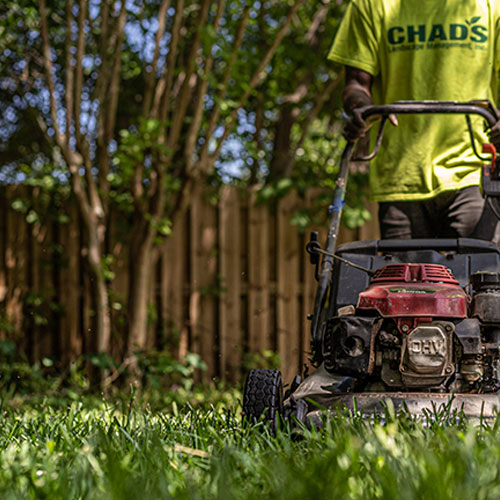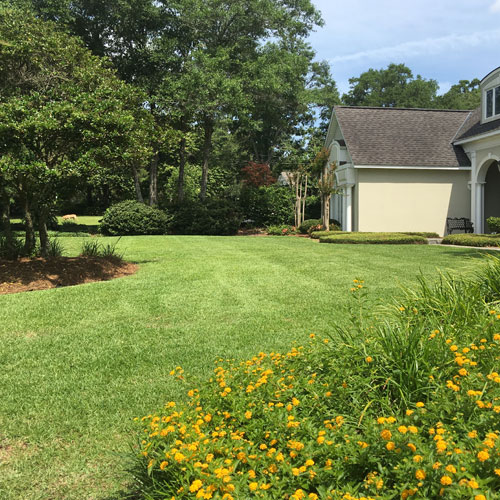
7 Lawn Mowing Tips for a Healthy Lawn
March 4, 2021
When to Start Mowing in Spring
March 17, 2021Nothing ruins a lush spring lawn like unsightly weeds. Spring weeds can sneak up on you, becoming an unwelcome invader among your green grass and beautiful blooms. Once they’ve taken root in your lawn, they’re guaranteed to overstay their welcome. Even if you use a chemical weed killer, it could be weeks – or even months – before they’re under control.
Luckily, there’s a way to eliminate spring weeds before they invade your lawn: spring pre-emergent herbicides. Read on to learn what spring pre-emergents are, how they work, and how you can apply them to your landscape to rid yourself of spring weeds for good.
What are Pre-Emergents?
As the name suggests, pre-emergent herbicides are designed to kill weeds before they emerge from the soil and appear in your lawn. Once applied and watered in, pre-emergents penetrate the top two inches of soil and form a protective barrier that stops the growth process by killing spring weedlings as they sprout.
Pre-emergents are typically applied in early spring and early fall. Spring pre-emergents are designed to prevent seasonal weeds like crabgrass and clover. While you may not see these weeds until the summer season, they begin to germinate and grow in early spring.
Types of Pre-Emergents
Choosing a spring pre-emergent isn’t as easy as going to the store and buying the first one you see. There are several types of pre-emergents, and you’ll want to choose one that prevents your problem weeds without killing your lawn in the process. You should always read the label of any pre-emergent you’re considering to be sure it’s compatible with your specific type of grass.
There are two main types of pre-emergents: selective and non-selective. Selective pre-emergents only kill certain types of weeds, such as crabgrass or spurge. If you have problems with a specific weed, selective pre-emergents are the safest way to tackle the problem with minimal damage to your lawn.
Non-selective pre-emergents prevent any plant life they come in contact with from growing. That could include your grass, flowers, and any other plants in your yard. Non-selective pre-emergents are typically used along cracks in driveways or near fence lines.
Pre-emergents typically come in liquid or granule forms. Liquid pre-emergents are mixed with water and applied to your lawn via sprayer, while granules are applied with a granular or portable spreader. It’s important to water both methods well after application to achieve proper soil penetration.
When should you apply Pre-Emergents?
It’s important to note that pre-emergents are not effective in killing weeds that are already established. Once you can see weed sprouts, it’s too late for pre-emergent herbicides – you’ll need to choose a post-emergent method to tackle them. For this reason, timing is key in getting the best results from your pre-emergent application.
You want to apply pre-emergents to your lawn before weeds have a chance to sprout. During the spring, that means as soon as soil temperatures rise above 55F for at least 36 hours. This is typically in early-mid March for our area, though temperatures can vary each year.
The easiest way to determine your soil temperature is with a soil thermometer, which you can find at any local home and garden store. You can also visit the Alabama Farmers Federation for an interactive temperature map.
Of course, the easiest way to get stress-free spring weed control is to let the professionals at Chad’s Landscape Management handle it for you! Our team of landscape maintenance experts are currently applying spring pre-emergent treatments to lawns and landscapes across the area. If you need help tackling your spring weed problem, contact us today!





